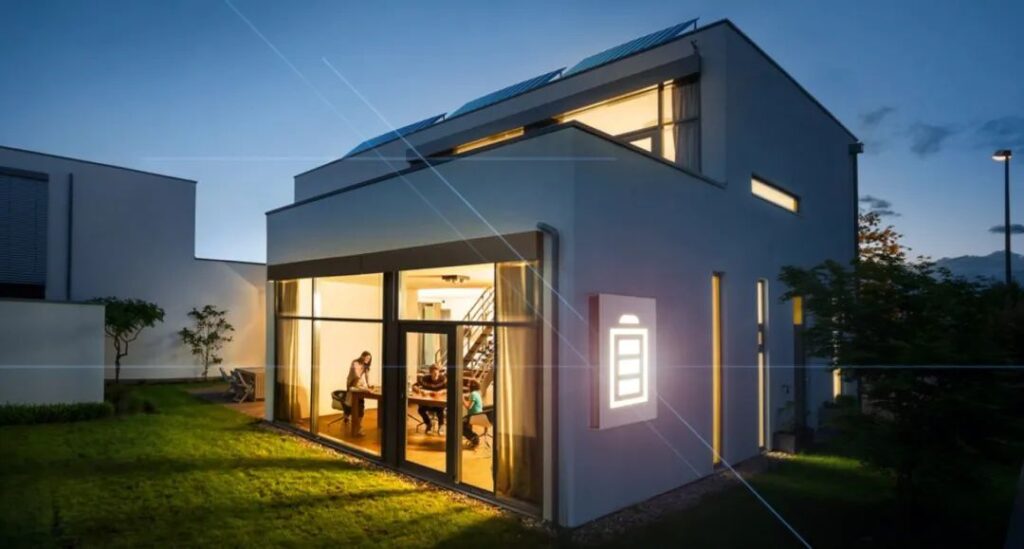Safety is one of the primary concerns for both businesses and homeowners when it comes to energy storage solutions. As the adoption of balcony energy storage systems (BESS) grows, questions around their safety are increasingly important. Whether it’s protecting against fire, preventing overloading, or ensuring durability in extreme weather conditions, a well-designed energy storage system must prioritize safety at every step.
In this article, we will explore the safety features of balcony energy storage systems in detail. From advanced design mechanisms that prevent short circuits and overloading to rigorous safety certifications, this article will provide comprehensive insights into how balcony energy storage systems ensure user safety. We will also highlight the importance of industry standards and how they build trust and confidence in these systems for both residential and commercial applications.
1. Understanding the Key Safety Concerns in Energy Storage
Before we dive into the specific safety mechanisms built into balcony energy storage systems, it’s essential to understand the potential safety risks associated with any energy storage solution. These risks are common to various forms of energy storage, including larger industrial systems and smaller residential units.
Common Safety Risks in Energy Storage Systems
- Overheating and Fire: One of the most significant risks in any energy storage system is the potential for overheating, which can lead to fires. This is particularly a concern with lithium-ion batteries, which are commonly used in energy storage systems due to their high energy density.
- Overcharging and Overloading: When a battery is charged beyond its capacity or overloaded with excessive power demand, it can degrade the battery or cause a system failure. In extreme cases, this can lead to electrical fires or equipment malfunctions.
- Short Circuits: Electrical short circuits can occur due to faulty wiring, manufacturing defects, or damage to system components. This can lead to a sudden discharge of energy, posing a significant fire and safety risk.
- Extreme Weather Conditions: Balcony energy storage systems, especially those installed outdoors, need to be resilient against extreme weather conditions, including intense heat, freezing temperatures, storms, and heavy rain.
- Mechanical Damage: External impacts, such as falling objects or improper handling during installation, can damage the components of a balcony energy storage system, leading to potential safety hazards.

2. Built-in Safety Mechanisms in Balcony Energy Storage Systems
Manufacturers of balcony energy storage systems have developed a range of advanced safety mechanisms to mitigate these risks. These systems are designed with multiple layers of protection to ensure that even in the event of a malfunction, the system remains safe and reliable.
Key Safety Features in Balcony Energy Storage Systems
1. Thermal Management Systems
One of the most critical safety features in modern balcony energy storage systems is a thermal management system. These systems continuously monitor the temperature of the battery and other components to prevent overheating. If the system detects that the temperature is rising above safe levels, it will automatically reduce power output or shut down the system to prevent damage.
- Active Cooling: Some balcony energy storage systems are equipped with active cooling technologies, such as fans or liquid cooling, to dissipate heat and maintain optimal operating temperatures.
- Passive Cooling: Other systems rely on passive cooling mechanisms, such as heat sinks and thermal insulation, to prevent overheating without the need for external power or moving parts.
2. Overload and Overcharge Protection
To prevent overloading or overcharging, balcony energy storage systems are equipped with overload protection mechanisms. These systems monitor the flow of electricity into and out of the battery and automatically shut off when the system reaches its maximum safe capacity.
- Battery Management Systems (BMS): A critical component of any energy storage system is the Battery Management System (BMS), which regulates the battery’s performance by monitoring voltage, temperature, and current. The BMS can prevent overcharging by cutting off the power supply when the battery is fully charged.
- Circuit Breakers and Fuses: Circuit breakers and fuses are built into the system to automatically interrupt the flow of electricity in the event of an overload, preventing damage to the battery or other components.
3. Short Circuit Protection
Short circuit protection is another vital safety feature in balcony energy storage systems. These systems are designed to detect and isolate short circuits before they cause damage or pose a safety risk.
- Automatic Shutdown: In the event of a short circuit, the system can automatically shut down to prevent further damage or fire hazards.
- Fireproof Casings: Many balcony energy storage systems are encased in fire-resistant materials that can contain any potential fire caused by an electrical short, preventing it from spreading to other parts of the system or the building.
4. Weatherproofing and Durability
Given that balcony energy storage systems are often installed outdoors, they must be designed to withstand a variety of environmental stressors. To ensure long-term safety and reliability, these systems are built with weatherproof enclosures that protect the system from rain, snow, UV radiation, and extreme temperatures.
- IP Ratings: Most balcony energy storage systems come with an IP (Ingress Protection) rating, which indicates the level of protection against dust and water. Systems with a high IP rating, such as IP65 or IP67, are fully protected against dust and can withstand powerful water jets or immersion in water.
- Corrosion-Resistant Materials: The outer casings of these systems are made from corrosion-resistant materials such as stainless steel or weatherproof plastics to prevent rust and degradation over time.
5. Impact and Vandalism Protection
Balconies are exposed to potential mechanical damage from external factors, including falling objects, accidents, or vandalism. To mitigate these risks, balcony energy storage systems are often built with reinforced exteriors that provide impact resistance.
- Tamper-Proof Designs: Some systems also feature tamper-proof designs, which prevent unauthorized access or damage to the system’s internal components.
3. Safety Certifications: Building Trust in Balcony Energy Storage Systems
Safety certifications play a crucial role in ensuring that balcony energy storage systems meet the highest standards for performance and safety. These certifications are awarded by independent agencies that rigorously test the systems under a range of conditions to ensure they can operate safely.
Key Safety Certifications for Balcony Energy Storage Systems
| Certification | Description |
|---|---|
| UL 9540 | This certification ensures that energy storage systems meet comprehensive safety standards for performance, including electrical, mechanical, and fire safety. |
| UN 38.3 | Required for the safe transport of lithium-ion batteries, this certification ensures that the batteries are tested for extreme conditions, including temperature, shock, and vibration. |
| IEC 62619 | This international standard covers the safety requirements for secondary lithium-ion batteries used in industrial applications, including energy storage systems. |
| CE Marking | The CE marking indicates that the product complies with EU safety, health, and environmental protection standards. |
| IP65/IP67 | These ratings indicate the system’s level of protection against dust, accidental contact, and water, ensuring the system is safe for outdoor installations. |
Why Certifications Matter
Safety certifications provide both consumers and businesses with confidence that the balcony energy storage system they are installing meets the highest safety standards. These certifications cover a wide range of aspects, including:
- Electrical Safety: Ensures the system can safely handle electrical loads and prevents risks such as short circuits or electrical fires.
- Fire Safety: Certifies that the system is designed to prevent overheating and contains fire-resistant materials that can stop the spread of flames in the event of a malfunction.
- Mechanical Safety: Verifies that the system is durable and able to withstand environmental stressors such as impacts, vibrations, and extreme weather conditions.
4. Best Practices for Safe Installation and Maintenance
While balcony energy storage systems come with a host of built-in safety features, proper installation and maintenance are essential for ensuring long-term safety and reliability.
Safe Installation Practices
- Professional Installation: It’s essential to have the system installed by a licensed professional who is experienced in energy storage systems. This ensures that the system is properly connected to the electrical grid and complies with local safety codes.
- Compliance with Local Regulations: Before installation, it’s important to check local regulations and building codes to ensure that the system meets all necessary requirements.
- Proper Ventilation: Although modern balcony energy storage systems are designed to minimize heat buildup, it’s still crucial to install the system in a well-ventilated area to allow for adequate airflow.
- Secure Mounting: The system should be securely mounted to prevent it from being damaged by external forces, such as high winds or accidental impacts.
Maintenance for Long-Term Safety
- Regular Inspections: Periodically inspect the system for any signs of wear, damage, or corrosion. This is especially important for outdoor installations, where the system is exposed to the elements.
- Battery Health Monitoring: Many modern systems come with remote monitoring capabilities, allowing users to track the health and performance of the battery. This can help detect any issues before they become serious safety risks.
- Firmware Updates: Ensure that the system’s firmware is kept up to date, as manufacturers often release updates that improve system safety and performance.
- Response to Alarms or Alerts: If the system’s monitoring software detects any irregularities, such as overheating or abnormal battery behavior, it’s important to address these issues promptly to prevent potential safety hazards.

5. The Future of Safety in Balcony Energy Storage Systems
As the market for balcony energy storage systems continues to grow, manufacturers are investing heavily in research and development to further improve the safety and reliability of these systems. Several key trends are emerging that promise to enhance the safety of energy storage systems in the years to come.
1. Advanced Battery Technologies
New battery technologies, such as solid-state batteries, are being developed to address some of the safety concerns associated with traditional lithium-ion batteries. Solid-state batteries are less prone to overheating and thermal runaway, which makes them inherently safer for use in residential energy storage systems.
2. AI-Driven Safety Monitoring
The integration of artificial intelligence (AI) in energy management systems is enabling real-time monitoring of battery health and system performance. AI can predict potential safety issues before they occur and automatically adjust system parameters to prevent malfunctions.
3. Improved Fire Suppression Systems
Future systems may incorporate more advanced fire suppression technologies, such as automatic extinguishing systems that can detect and contain fires at the earliest possible stage, reducing the risk of damage to the surrounding area.
Conclusion: Trust in the Safety of Balcony Energy Storage Systems
Balcony energy storage systems are designed with safety as a top priority. From advanced thermal management systems and overload protection to weatherproof enclosures and rigorous safety certifications, these systems are built to withstand a wide range of environmental and operational challenges. With proper installation, regular maintenance, and adherence to safety best practices, these systems offer a safe, reliable, and efficient solution for storing energy in urban environments.
As technology continues to evolve, we can expect even greater advancements in the safety and performance of balcony energy storage systems. Whether you’re a business looking to offer these systems to customers or a homeowner interested in reducing your energy costs, the future of balcony energy storage is bright—and safe.





